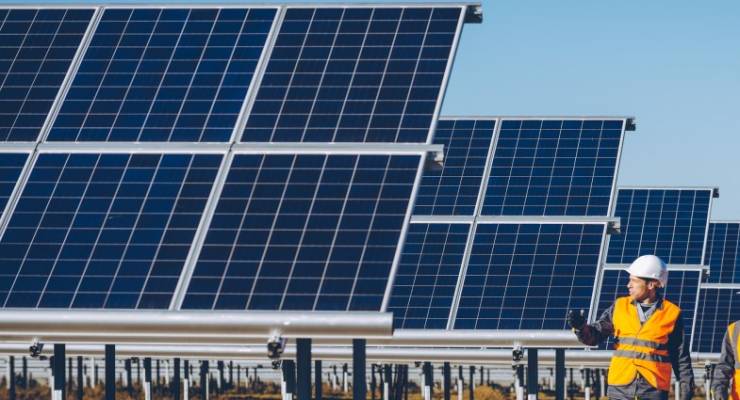
The challenges of the COVID-19 crisis have occupied Australia’s — and the world’s — policy attention in recent months. And despite Australia’s comparative success to date, will continue to do so for months or years to come.
But we must not forget the existing challenges we faced prior to 2020. There are the tectonic economic forces of globalisation and automation putting pressure on jobs and wages. There has been rising inequality around the world and in Australia.
And, perhaps above all, in spite of signing up to the Paris Agreement to restrict global warming to less than 2˚C, there has been a shocking failure to address climate change.
The economic costs of inaction are considerable. One recent study has suggested a staggering cost of US$23 trillion a year by the end of the century (equivalent to four to six 2008 global financial crises every year), with Australian losses of A$159 billion a year through drought-driven collapse in agricultural production and sea-level rise.
Although the COVID-19 crisis does not present us with new solutions to address climate change, it has shone a brighter light on what might be possible than we have seen before.
Around the world it has given clean air to people living in terribly polluted cities . It has demonstrated directly the impact of emissions. In California the 80% drop in car usage due to the state’s lockdown provisions mean that for at least one day in April, Los Angeles — the poster child for a polluted city in a wealthy country — had perhaps the cleanest air of any major city in the world.
And, for those fortunate enough to be able to work from home, it has shown them and their employers that telecommuting can be effective and efficient— saving commuting time as well as reducing carbon emissions.
Never before have so many people had a common, shared experience at the same time. There is some hope this collective “lived experience” will lead more favorable public opinion about investments in electric cars, alternative energy sources.
The need is an urgent one. To reduce emissions and grow the economy, this might also help make the case for congestion taxes and even a “carbon dividend” involving a tax on carbon that is redistributed evenly to all voting-age Australian citizens — as one of us has previously proposed with the Australian Carbon Dividend Plan (ACDP).
This plan would provide incentives for producers to adopt more efficient technologies and for consumers to reduce their carbon footprint, while providing progressive compensation to households
The post-COVID-19 economy
The crisis has also sparked debate about what the post-COVID-19 economy needs to look like.
Even before the crisis Australia was suffering from “secular stagnation” — a term repopularised by former US treasury secretary Larry Summers — involving a protracted period of low economic growth caused by a global shift in the balance between savings and investment.
Australia’s post-COVID-19 economy will need to involve an even greater push toward productivity improvements and economic reforms that boost economic growth and shrink away debt incurred from managing the pandemic. This has already been foreshadowed by prime minister Scott Morrison.
One natural area for reform is increasing our comparatively low national research and development (R&D) spending, with spending on “green tech” an important component of this.
Increasing R&D spending
At 1.88% of GDP, Australia’s current R&D spending is relatively low for an advanced economy. The OECD average is 2.4%. South Korea is at 4.24%.
Were Australia to boost its R&D spending up to the OECD average and those expenditures earned a 25% annual rate of return (which, as Nobel Laureate Paul Romer has emphasised, is at the lower end of the range of credible estimates of these returns), then Australian GDP growth would be increased by 0.124% per annum.
Compared to a baseline GDP growth of 2.0% p.a., this would lift our GDP by $135 billion over 30 years, an average of $4.5 billion per annum. To put this in perspective, this is larger than the size of the entire Australian dairy industry.
How to do it
Australian universities are home to world-class scientific research in many areas — particular in green technology — that can help drive economic growth at a global scale.
The UNSW, for instance, has world-leading expertise in photovoltaics and solar energy. In recent decades, international students have greatly benefited from an education in new energy technologies at UNSW and returned home (many from China) to go on to establish manufacturing companies of solar PV that have become the principal suppliers to Europe, Australia and the world.
Solar technology at UNSW is just one example of the far-reaching role universities can play in establishing new industries (end employment) in Australia and helping the world pivot the global economy to low carbon.
Harnessing these opportunities requires translating basic research into the commercial sphere. One way to do that is through the creation of an Australian Research Translation Future Fund as proposed by UNSW vice chancellor Ian Jacobs. Its would focus on translating Australian Research Council-funded research, akin to the way the Medical Research Future Fund does in translating research funded by the National Health and Medical Research Council.
Together with tax incentives to encourage industry to partner with universities (as recommended by both the 2016 review of the tax incentive and the government’s Australia 2030 innovation report), these “green stimulus” measures would provide a bridge from the laboratory to the market.
A multi-pronged approach
Measure to internalise environmental externalities like the ACDP while providing progressive compensation are important to addressing climate change.
The economic costs of inaction are eye-watering. The plan also incentivises the adoption of more efficient, lower-emission technologies across the economy.
Those technologies still need to be developed, of course. Some of that will happen overseas — in the US or China, for example. But there are major opportunities for Australia in translating our exceptional primary research into commercial opportunities, opportunities that will develop as nations more aggressively strive to meet their Paris Climate Agreement targets by decarbonising their economies.
Doing so not only helps the environment but also our economic recovery from COVID-19.
But it will require bringing universities and industry together: both pushing universities toward translational research and pulling industry toward it.
The economic cost of inaction is just not an option.
What will post-pandemic environmental action look like? Let us know your thoughts by writing to letters@crikey.com.au. Please include your full name to be considered for Crikey’s new Your Say section.
Richard Holden is professor of economics at UNSW Business School and Chris Turney is ARC Laureate Fellow and Professor of Earth Science & Climate Change at UNSW. Chris is a scientific advisor to clean tech company CarbonScape.








Ironic that binge buying of the sort that occurred in March – with food retailing sales increased 24% over February – reflects exactly the general public recognition of the fact of class war, of a society run to impoverish 99% of our people. After all, morrison has not only made clear that JobSeeker and JobKeeper are temporary, but that the “snap back” will be brutal. Nor does the ALP (Alternative Liberal Party) disagree.
Sadly, what should be blindingly obvious actually needs to be said, that class war is being waged by the filthiest rich against us the 99% through the institutions of government that the 1% have bought, with money or with favours, with the aim not just of reducing our standard of living to a “reasonable” level (nonsense though the concept is in this context), but of shrinking us as far into penury as it can manage.
More they have, more they want – more they can get, more they will take!
But in the media, with a few honourable exceptions such as Crikey, such truths dare not be said by commentators. As commenters we can say it because as the Pell matter demonstrated, we are simply excluded from the topics for which those above us are competing to be heard.
We have four months to force something better. How about we make that the focus? If we can’t do that, we can’t do this.